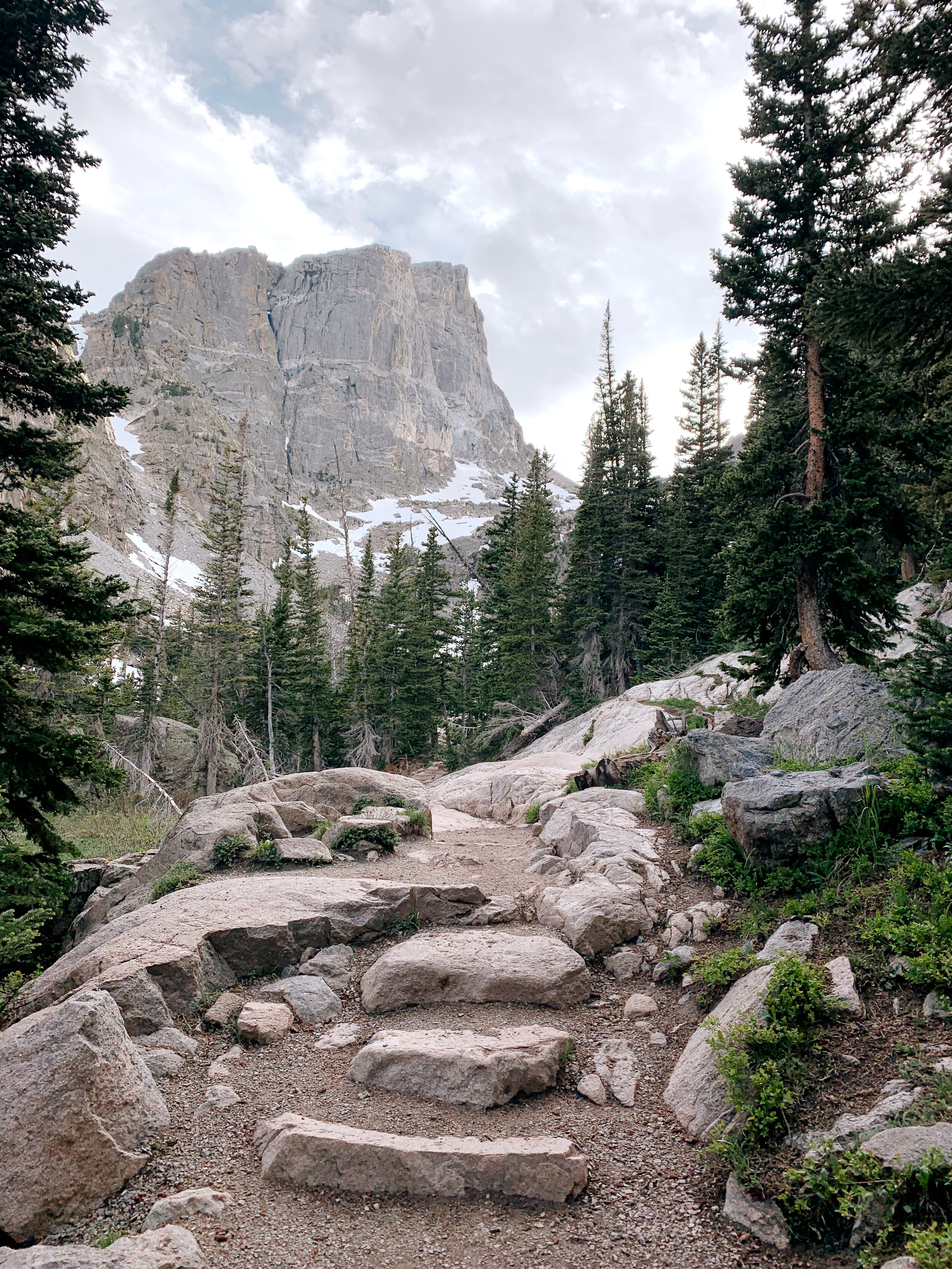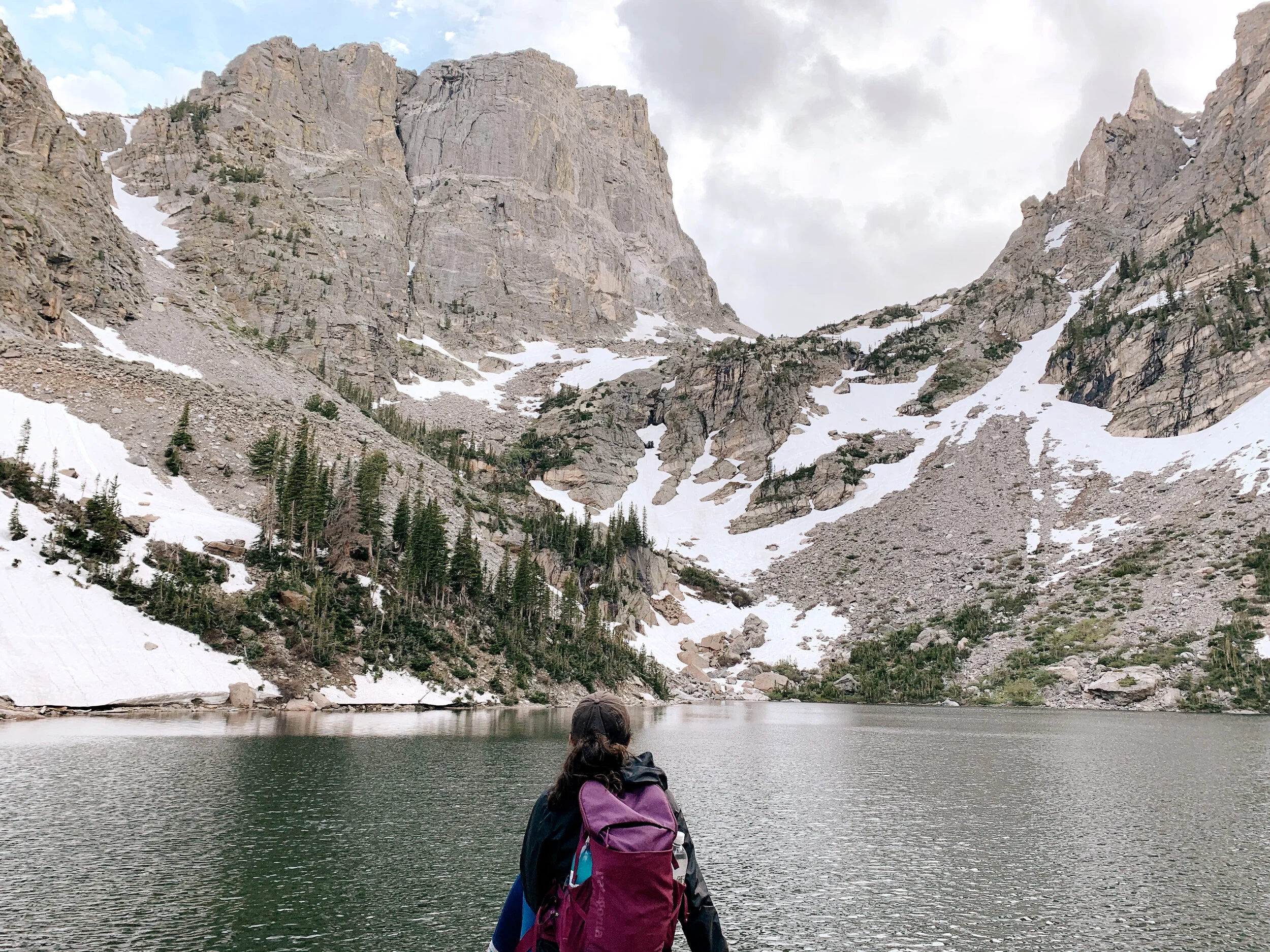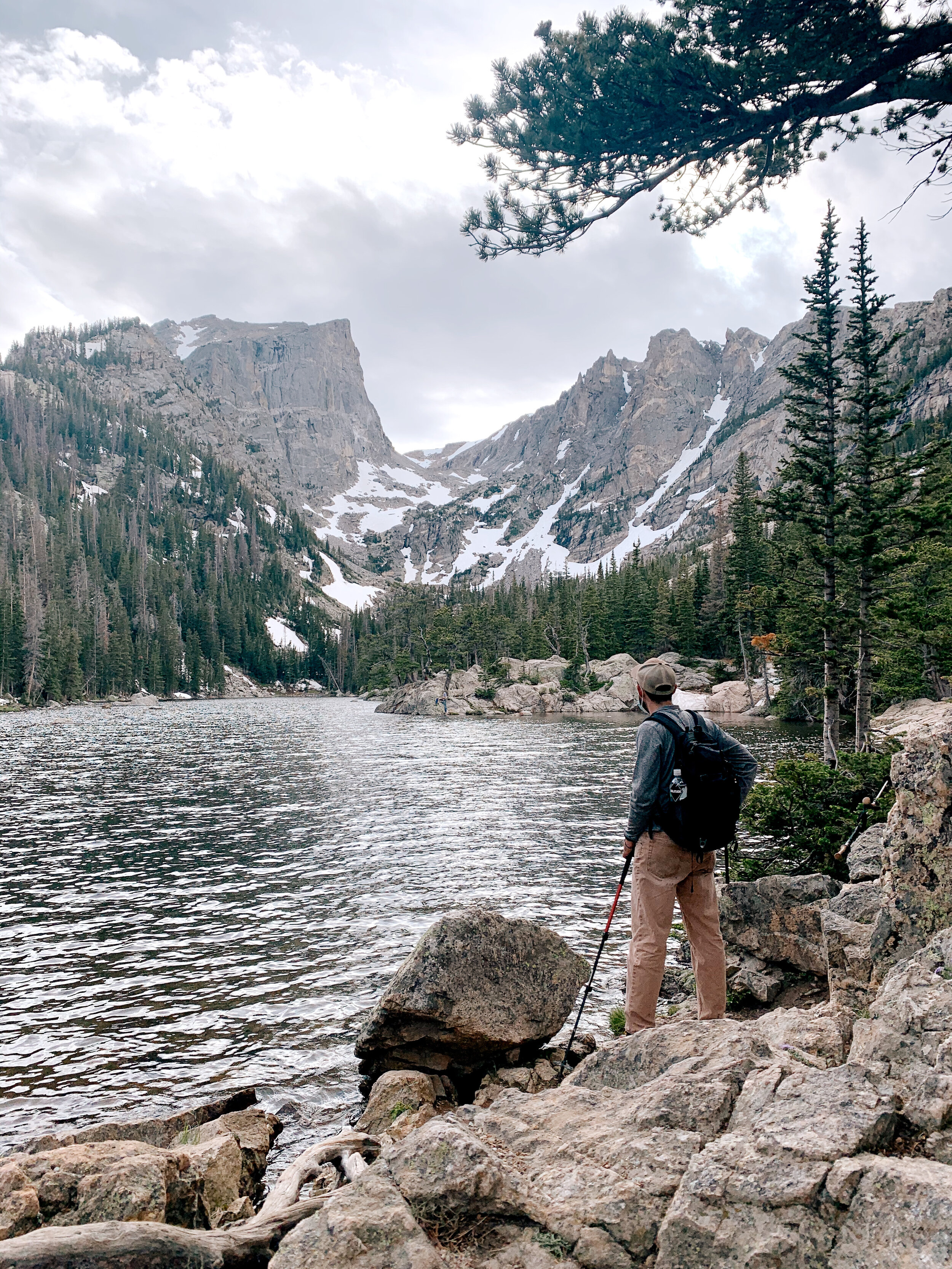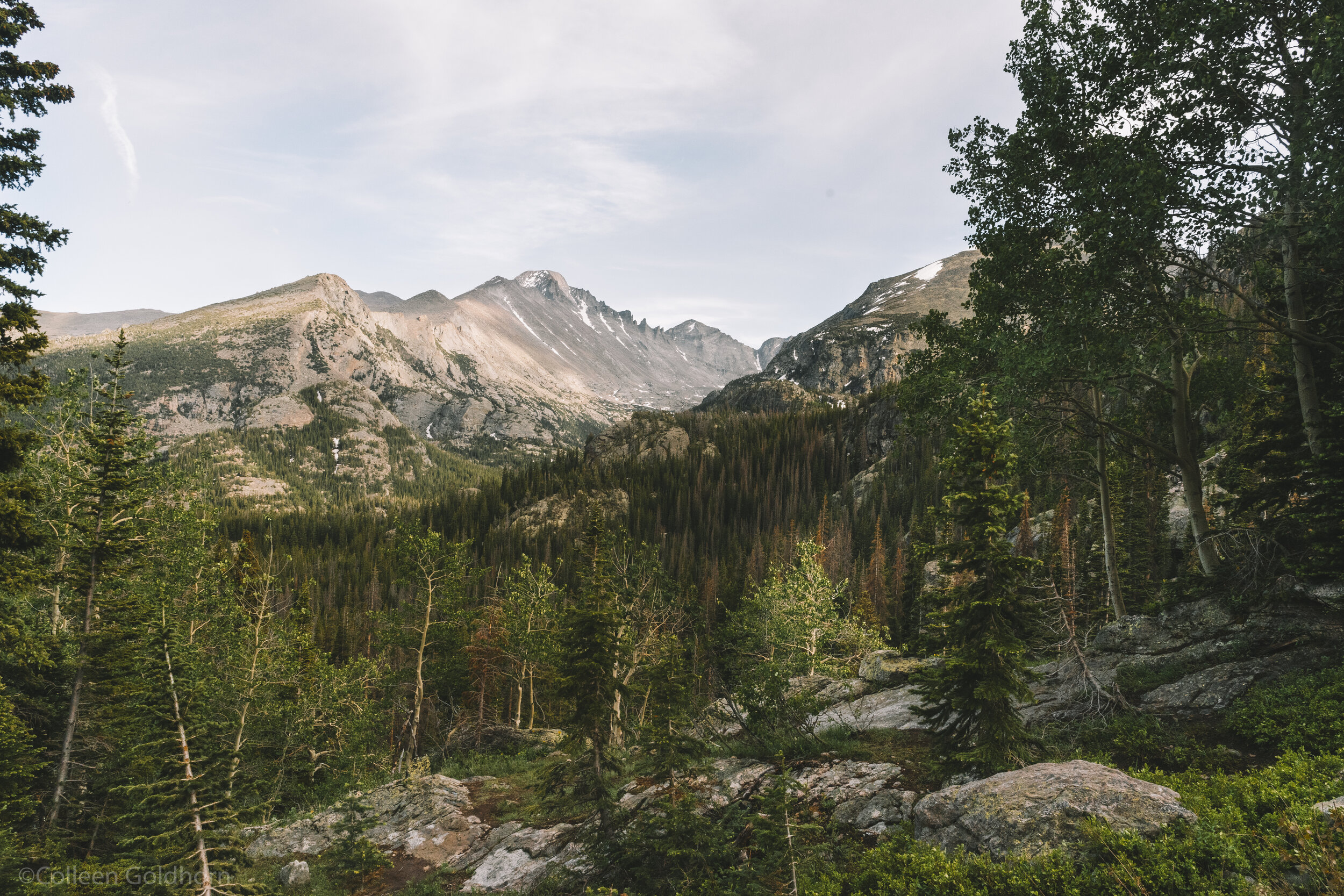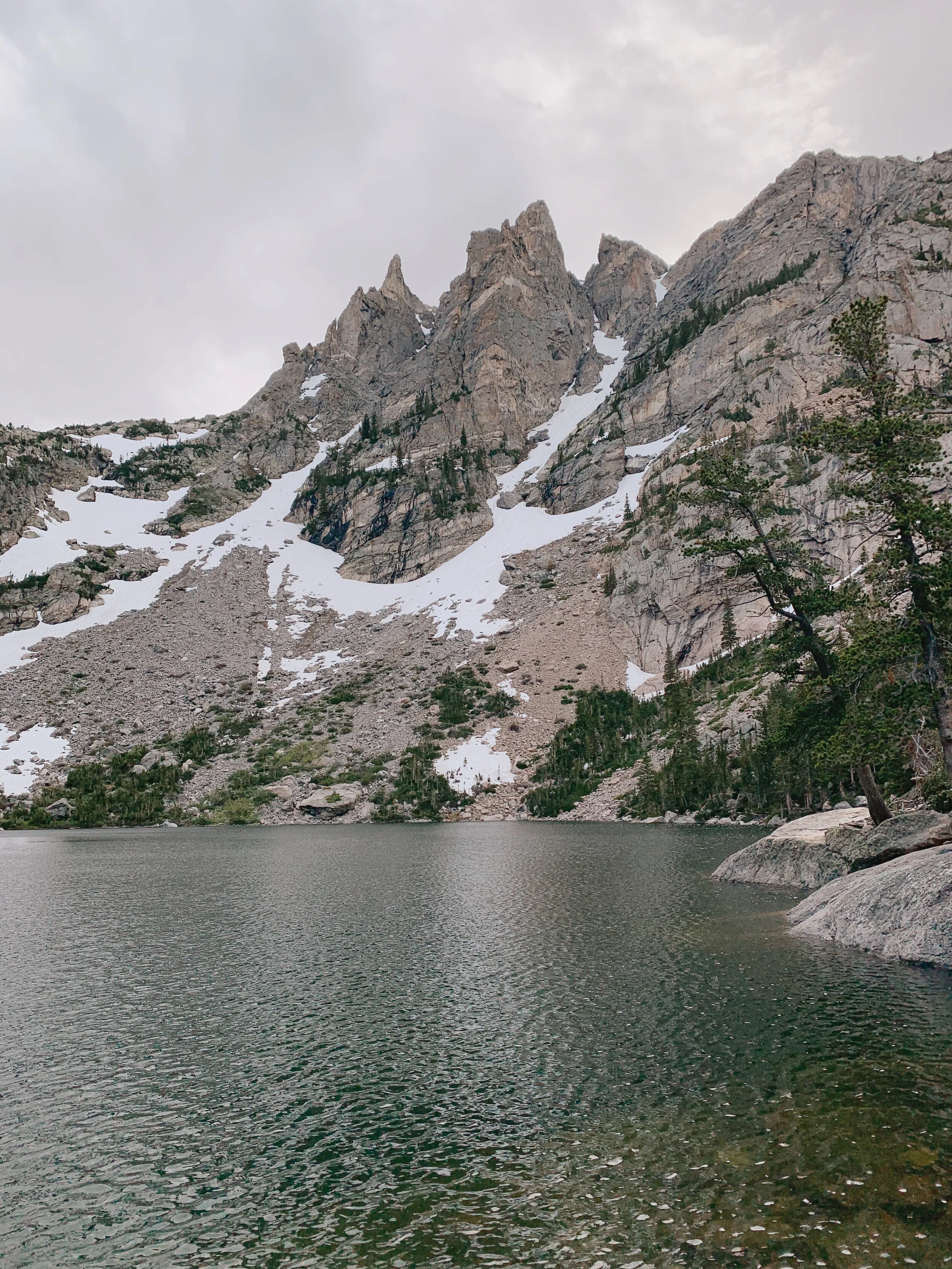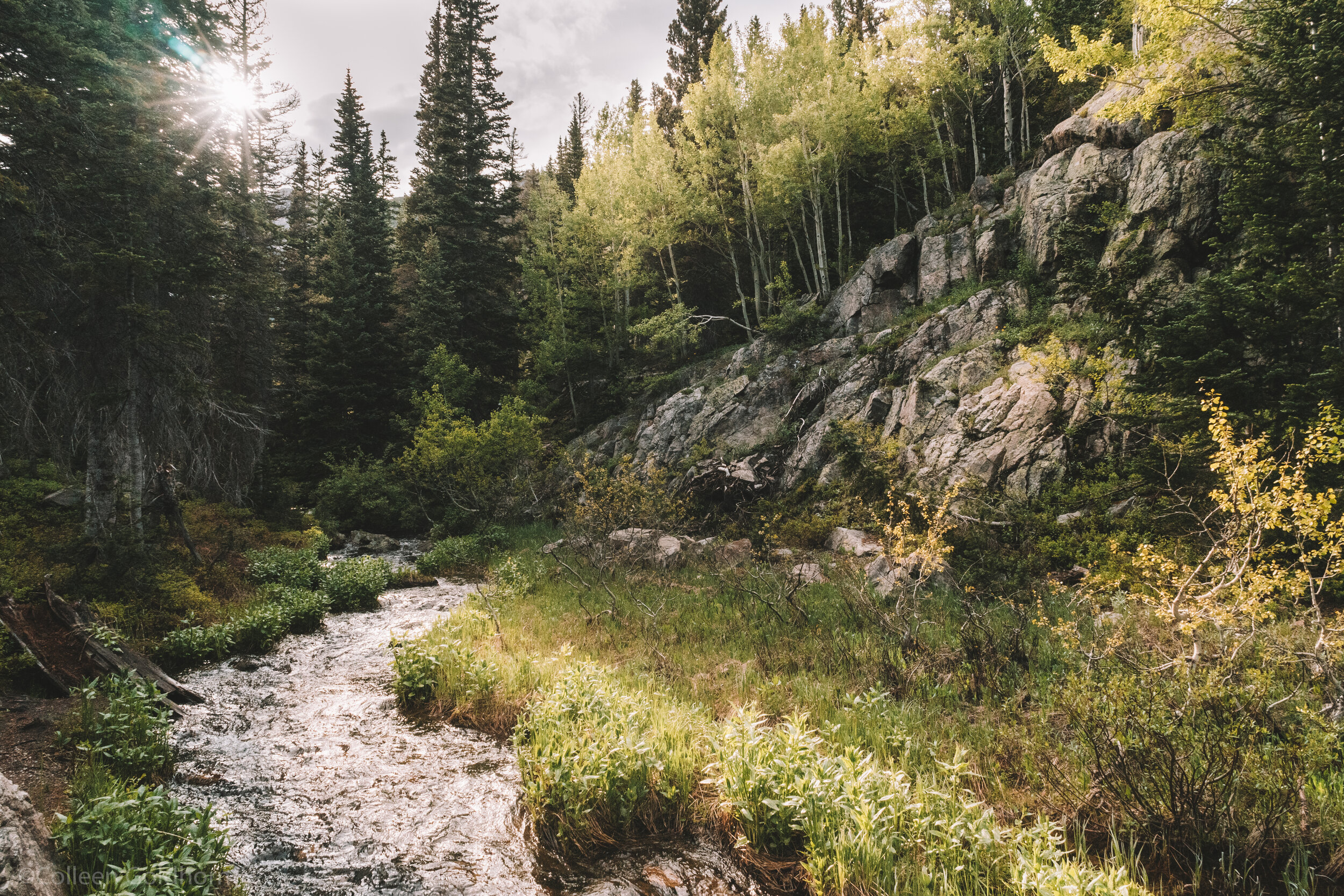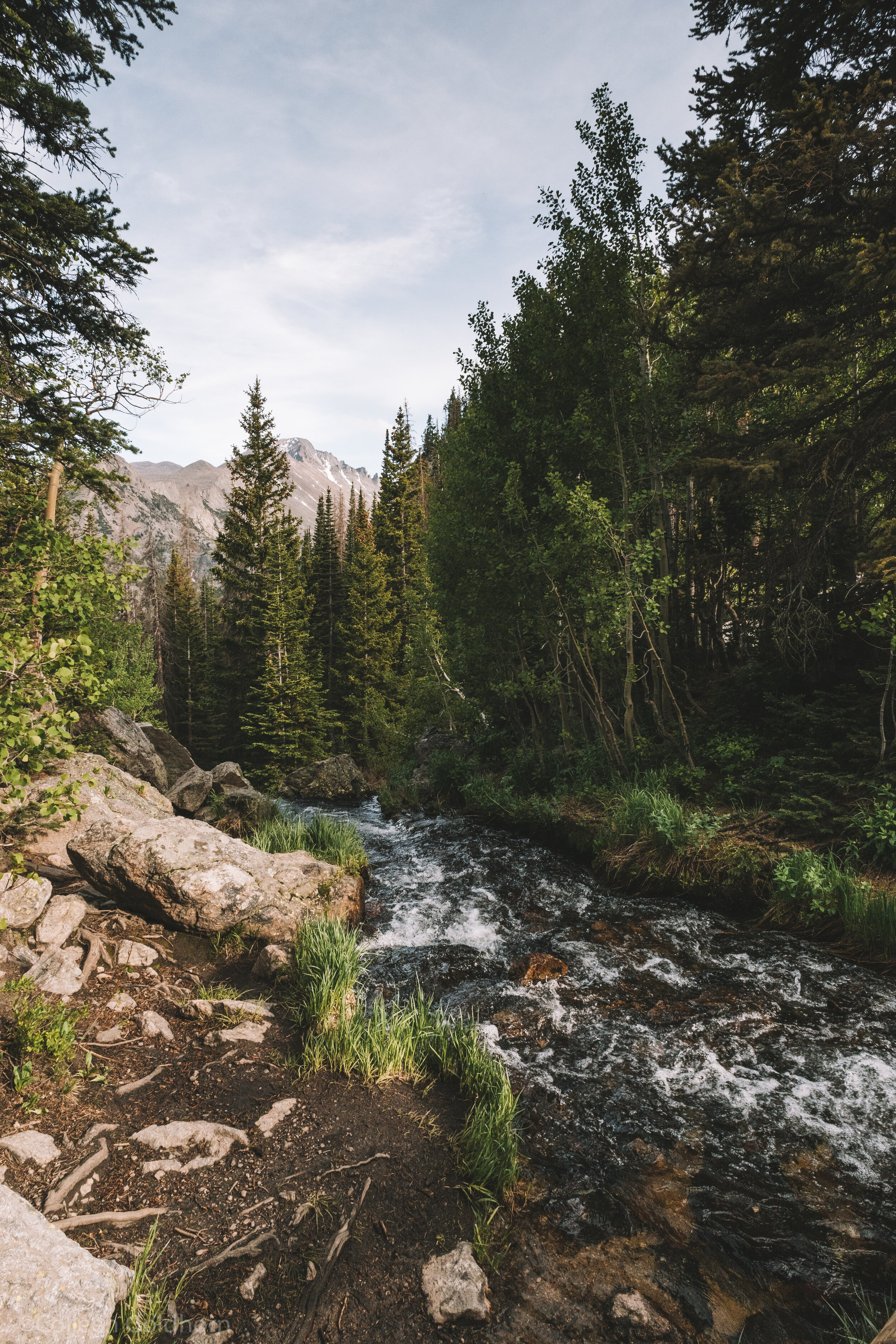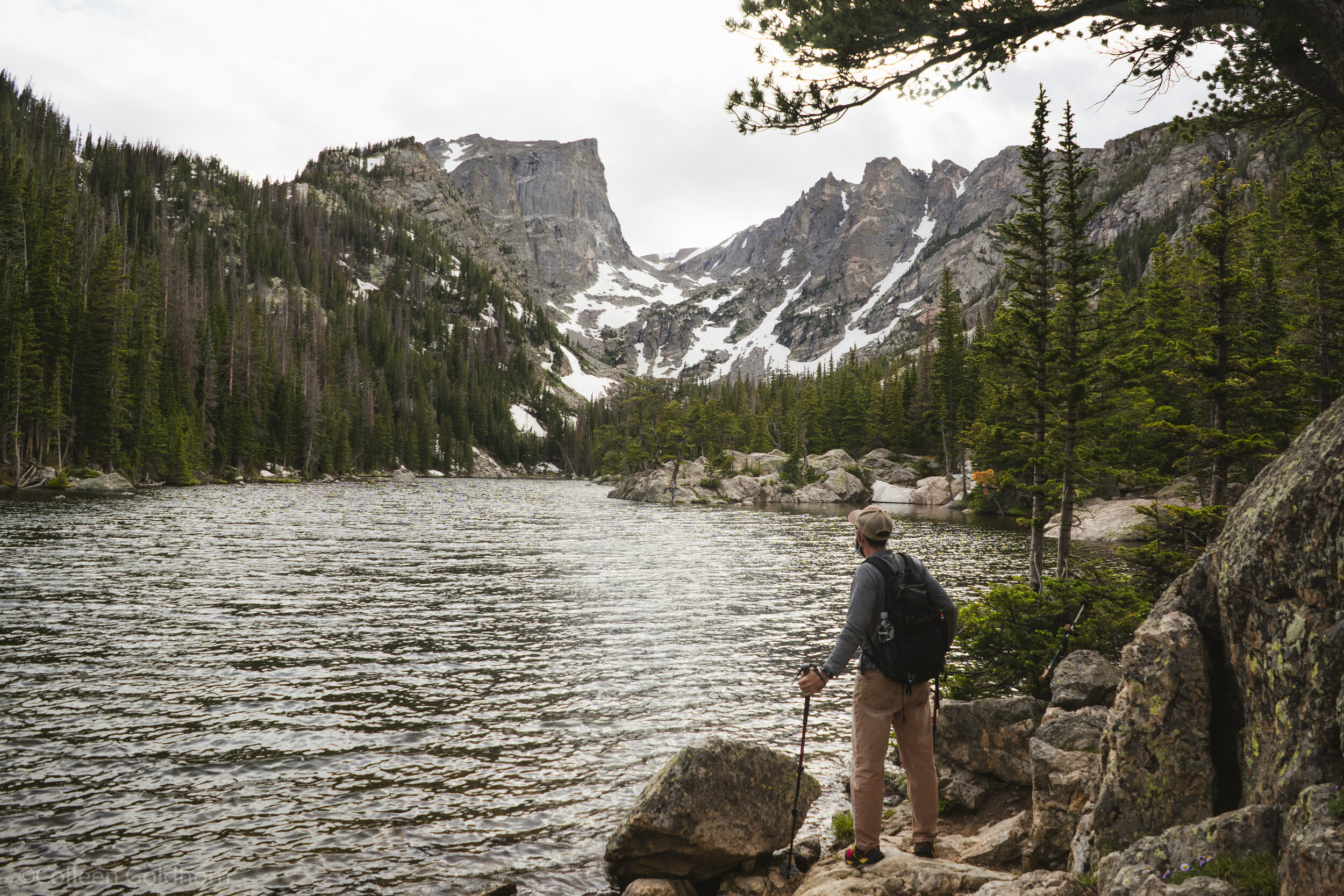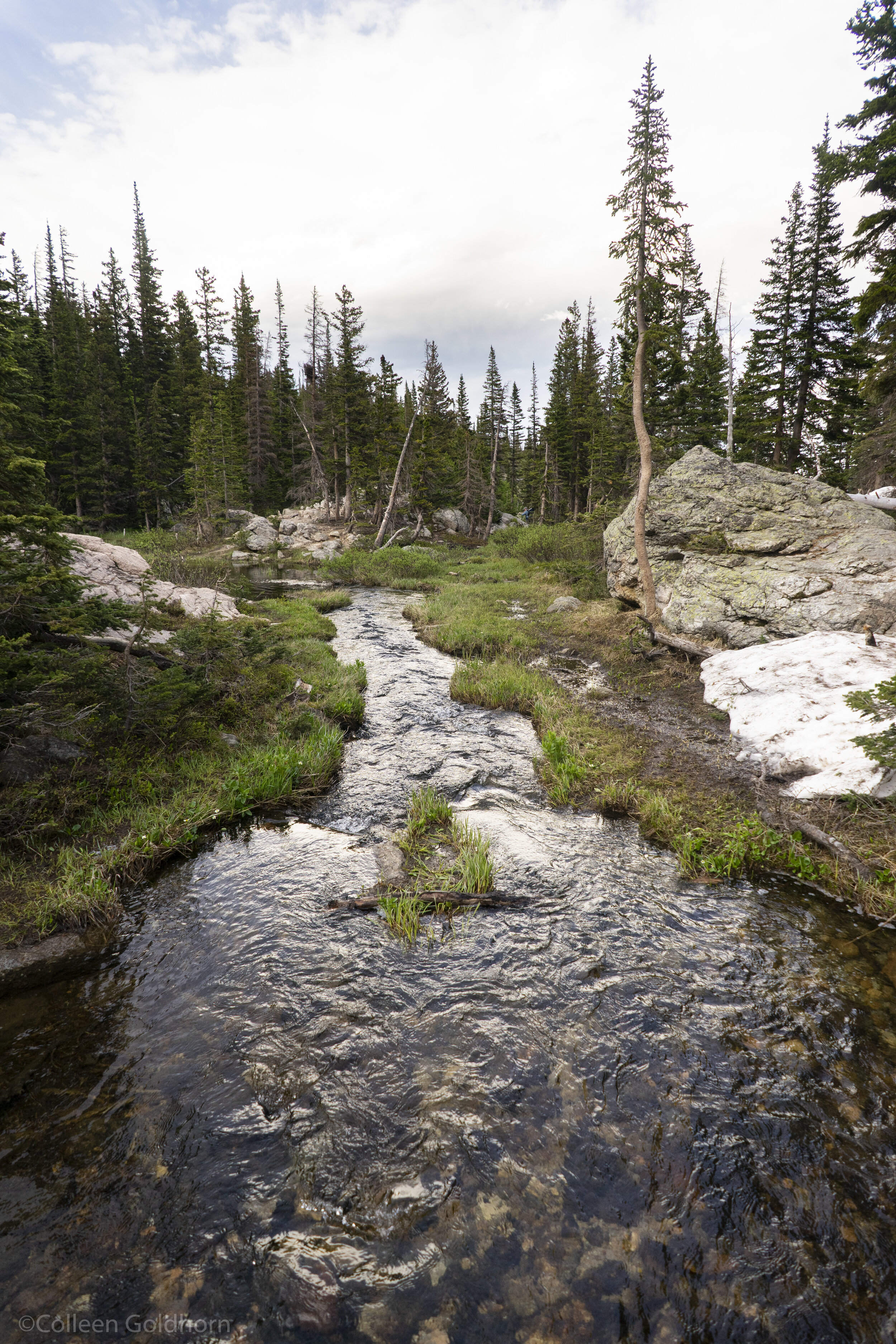Dream & Emerald Lakes, Colorado
Total Distance: 3.9 miles
Elevation Gain: 708 feet
Trail Type: Out-and-back
Difficulty: Easy / Moderate
The Hike: The trail to Dream and Emerald Lakes is one of the most visited within Rocky Mountain National Park. It’s popular for a reason though: this relatively easy hike takes you high into the mountains and onto the shores of pristine alpine lakes. You will be a stone’s through away from the towering mountains that make up the park, and get to witness stunning landscape views along the way up.
Hikers will start their trek next to Bear Lake before beginning their climb up the mountain. Within a half mile, the trail skirts along the shores of Nymph Lake. After a few miles of climbing next to sweeping landscape vistas and flowing streams, hikers will be brought to the shores of the gorgeous Dream Lake.
While many people stop their hike at Dream Lake, I highly suggest continuing on another .7 miles to Emerald Lake, which sits inside a mountain amphitheater. Regardless as to where you stop your hike, this trail gives visitor’s a perfect taste of the Rocky Mountains.
The Details: This hike starts at the Bear Lake Parking Area. Although this is a large parking lot, it is the starting point for multiple popular hikes within the park. Arrive early to ensure available parking.
After taking the .1 mile side trail to the shores of Bear Lake, backtrack until you see a sign pointing up a hill towards Emerald Lake. After hiking on a paved path for .5 miles, you will approach Nymph Lake. Then, after climbing for a few more miles, you will see signs for Dream Lake. Follow these signs onto the rocky outcrops along the water. After taking in the views, continue forward until you reach Emerald Lake. Once finished, backtrack down to the parking area.
Gear: For this hike, we recommend bringing along either the Winter or Summer Day Hike Essentials, depending on the season. Micro-spikes or Snowshoes are strongly advised in the winter.
*The information in this article is for planning purposes only. Actual trail conditions may vary depending on environmental factors. It is always advised to get the latest trail information from a park office or ranger before you begin your hike.

